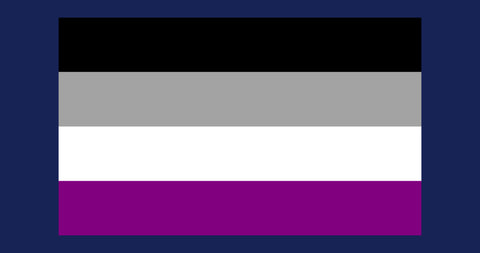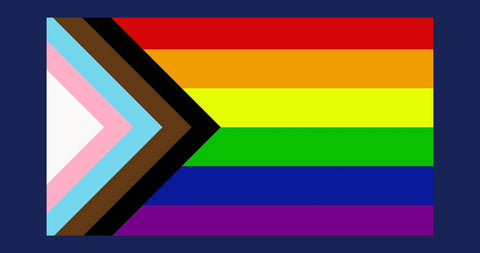What’s stopping the police in Singapore from arresting gay men again?
| Updated on
In September 1993, police in Singapore arrested 12 men in an “anti-gay” entrapment operation [Note 1].
Undercover policemen pretended to be queer at a cruising spot at Ford Road beach, and baited men to make sexual advancements on them. Once that happened, the undercover cops had the men arrested and charged.
This operation, later called the “Fort Road incident”, was just one of many “anti-gay” stings conducted by the police since the late 1980s. Yet something about it was different.
Instead of a fine, the arrested men were sentenced for the first time to jail and 3 strokes of the cane. This punishment was so unusually harsh that it caused an uproar within the queer community. In an appeal by one of the arrested men, then-Chief Justice (CJ) Yong Pung How even expressed his concern over the way the charges were handled.
Then suddenly, “anti-gay” operations seemed to stop happening.
But why did the police stop?
And more importantly: is there anything preventing them from starting it all over again?
Cruising in the 80s–90s
To understand how the “anti-gay” police operations were conducted, we need to first understand cruising in the 80s to 90s.
Back then, it was a lot more difficult for queer folks to meet and know other queer people. In the first place, there were no online communities for queer folks, because the internet simply didn’t exist. The first consumer internet service only launched in Singapore in 1994, and on top of that, mobile phones — which would’ve allowed for more private means of communication compared to shared household telephones — were only available to 13% of the population by 1997.
In a world without mobile devices and the internet, people only knew folks they’ve met and interacted with in real life. And because being queer was even more of a taboo back then, many were forced to hide who they were in their public, daily lives.
For that reason, physical venues such as bars and clubs — and to some extent, cruising spots — became spaces where queer folks congregated and found company.
Cruising back then is similar to modern-day Grindr, except it happened in a physical space instead of a digital one. Queer men would gather at secluded spaces — empty office districts, beaches, or heavily forested areas — near or after midnight to look for company. Some of them would be looking to make friends, and some would be looking for sexual intimacy.
There was also a certain social protocol — or dance — to cruising. Men who gathered at cruising spots didn’t just pounce on anyone they fancied; instead, they would first approach people they’re interested in and make conversation. If there was mutual interest, things might then gradually move to touching, kissing, or sex, depending on what both parties were looking for. Every step in this dance carried with it an implicit level of consent — something that even CJ Yong pointed out (more on this later) — and folks are free to walk away if they’re no longer interested.
The motivation behind cruising wasn’t exhibitionism. Rather, it was because there weren’t other spaces for queer men to meet each other or get physically intimate. The fact that cruising spots were often secluded, and that cruising activities tended to happen only very late at night, are strong evidence that cruisers wanted to be as far away from the public as possible.

The crusade begins: 1989–1995 [Note 2]
Editor’s note: The observations in this article are mainly drawn from news reports on the “anti-gay” operations. These archived news articles are linked below, but many of them are blocked from public access. Members of the public may still access them, but will have to do so using their personally-identifiable library account on a library computer. Many of the news articles also used derogatory terms.
The earliest documented “anti-gay” entrapment operation probably happened in 1989, when the police detained and questioned over 120 queer men and trans folks over the course of 3 days.
Since then, “anti-gay” police operations ramped up rapidly, and mainstream newspapers covered the arrests with (almost too much) fervour and aggression. Full names, ages, and occupations of the arrested men were often published in sensationalised news reports, which likely shaped public opinion about queer men in the pre-internet world.
At least from 1990 onwards, the police began using an abetment tactic to arrest and charge queer men at cruising spots. Here’s how it works.

The abetment tactic
News articles which reported on “anti-gay” operations give us a pretty good idea of the tactic that the police used to entrap and arrest queer men (see this, this, this, this, this, this, this, this, this, this, this, this, this, and this) (this isn’t even half of the news articles that publicised the arrests).
Undercover policemen would linger at well-known cruising spots late at night. There, they would pretend to be queer and make other men think that they’re looking for sexual intimacy. The undercover cops would engage with queer men according to the social protocol of cruising, until their target did something that the cops were baiting for — either a proposition of sexual intimacy, or physical touch.
Once that happens, the cop’s colleagues (who have actually been hiding in the shadows nearby) would swiftly move in to arrest the target. The cycle would repeat for many more hours into the night, often across many days, and the arrests would then be heavily publicised by the press.
This abetment tactic feels especially insidious because of the sudden and complete betrayal of trust by the undercover policemen. Using verbal and non-verbal cues, they made their targets think that they were interested in sexual intimacy at the cruising spots. Yet after implicitly consenting to sexual advancements, the cops would have the men arrested for it.
Penalties against queer men slowly got stiffer
Even though the police used seemingly similar tactics from 1990 onwards, they appeared to use different laws to charge queer men over the years. News reports paint a picture of gradually stiffer penalties against the arrested men, who were first punished with fines, then jail sentences with caning.
1990 to mid-1991: Soliciting in a public place
According to news reports (see this, this, this, this, and this), the police first charged queer men with “soliciting in a public place”. Under s 19 of the Miscellaneous Offences (Public Order and Nuisance) Act, it’s an offence to “solicit for an immoral purpose” in a public place.
In layperson’s terms, this means it’s illegal to propose any “immoral act” when in a public place — even if the person didn’t suggest any exchange of money. As far as we know, no written law or court case has explicitly defined what an “immoral act” is, though it likely involves some form of sexual exploitation or act. Based on the news reports, it also didn’t seem to matter whether the queer men proposed for sexual acts to be done in private or public.

So when an undercover cop baits a queer man into proposing sexual intimacy, he could arrest the man for “soliciting in a public place”. To be clear, even if the queer man suggests to bring the undercover cop home to have sex in private, he could likely still be arrested under this law.
If convicted, the queer man could face a fine of up to S$1,000. Subsequent convictions come with a fine of up to S$2,000 and/or a jail sentence of up to 6 months. Between 1990 to mid-1991, men charged for “soliciting in a public place” were fined S$400 to S$500.
Mid-1991 to end-1993: Outrage of modesty
In July 1991, police began to charge men they arrested under “outrage of modesty” instead of “soliciting in a public place”. From then on, nearly all publicly reported arrests were charged under “outrage of modesty” (see this, this, this, this, this, this, this, this, this, this, this, this, and this).
Compared with “soliciting in a public place”, the punishment for “outrage of modesty” is much more severe, because it comes with the possibility of a jail and/or caning sentence, compared to just a fine. Under s 354(1) of the Penal Code, “outrage of modesty” — also known colloquially as molestation — comes with a jail sentence of up to 2 years, or a fine, or caning, or any combination of the 3 punishments.
From an operational perspective, this meant that the undercover cops would’ve had to bait the queer men into touching their bodies. Given how consistently the police did this from mid-1991 onwards, it suggests that this was a deliberate tactical shift in “anti-gay” operations. It’s unclear why the police made this shift, but it resulted in much stiffer maximum punishments than before.

In September 1993, the 12 queer men who were arrested and charged in the “Fort Road incident” became the first entrapped men to be sentenced to imprisonment and 3 strokes of the cane for outrage of modesty. In comparison, previous sentences for “outrage of modesty” charges in “anti-gay” operations were fines between S$800–S$2,000.
The caning sentence was particularly shocking, because it’s often reserved (cols 2175–2242) for serious offences and inflicts significant physical damage — bleeding is almost guaranteed after 3 strokes, and some have been reported to enter a state of shock after higher stroke counts.
One of the 12 convicted men was so surprised at his sentence that he appealed his sentence to the High Court. His case was reviewed by CJ Yong, who overturned the sentence and set a precedence in favour of entrapped queer men.
In CJ Yong’s April 1994 ruling, he explained that the social protocol of cruising meant that there would be “little question of consent being forthcoming” from the undercover policemen. He thus found it worrying that the arrested men could be charged for outraging the modesty of undercover cops, who not only gave implicit consent to sexual advancements, but whose sole purpose at cruising spots were literally to bait for sexual advancements.
CJ Yong clarified that, unlike other molestation cases, there were no “unsuspecting victims” in these police operations. In the end, he ruled that combined jail and caning sentences are “unwarranted” and that even jail sentences are “inappropriate”.
In effect, this 1994 ruling made it such that future charges of “outrage of modesty” in “anti-gay” operations would likely fail to convict, and that even if a conviction were successful, it likely wouldn’t result in a jail sentence. While this might seem like a victory for queer men, it didn’t seem to stop the police from continuing their “anti-gay” operations.
Mid-1994 to end-1995: Section 377A
After the “Fort Road incident” and CJ Yong’s ruling, reports of “anti-gay” police operations tapered off. From mid-1994 to end-1995, however, the police conducted at least 3 more operations (see this, this, and this).
But instead of charging the men under “outrage of modesty”, they used Section 377A for 2 of the 3 operations where physical touch was successfully baited.

Under s 377A of the Penal Code, any act of “gross indecency” between 2 men — whether done in public or private — is an offence punishable by up to 2 years of imprisonment. “Gross indecency” is understood to include not just sex, but also acts that are sexual in nature. (Side note: Section 377A is often seen as the basis of institutionalised discrimination of LGBTQ+ people in Singapore.)
In the context of “anti-gay” operations, baiting the queer men to touch the bodies of undercover cops seemed to be sufficient grounds for a conviction under s 377A.

An illusion of safety: 1995–2010
After September 1995, “anti-gay” police operations stopped for more than a decade.
This long period of lull created an illusion of safety for queer men, and gave rise to a number of theories about the “anti-gay” operations. (Side note: we reached out to the police to ask them questions about the operations, but they promptly told us that they can’t comment on it.)
A popular theory about why the operations were conducted is that they were actually “anti-AIDS” operations, aimed at deterring sex between men to stop the spread of HIV in Singapore. Given that HIV was first reported in Singapore in 1985, the timeline seems to match with the start of the operations in 1989.
Another theory argues that CJ Yong’s April 1994 ruling made the police stop “anti-gay” operations out of the fear that they might face legal challenges if they continue.
But these theories fell apart in 2010, when the police conducted yet another operation.
2010: The police strikes again
On 4 May 2010, police conducted an “anti-vice” operation at a well-known cruising spot, with all the hallmarks of their 1989-1995 abetment tactic.

An undercover policeman loitered around the cruising spot at about 11pm, with his colleagues hiding nearby, ready to make arrests. When a queer man struck up a conversation with the undercover cop and told him that he was “looking for fun”, the policeman didn’t reject his offer or move away. Instead, he waited for the man to touch his body before calling his colleagues in to make the arrest.
The police refused to explain to the press what “vice” they were targeting with this operation, but the similarities to their “anti-gay” operations are uncanny. They eventually charged the man with “indecent behaviour in a public place” (s 20 of the Miscellaneous Offences (Public Order and Nuisance) Act), and he was fined S$1,000.
This 2010 operation is more significant than it first seems. To begin with, it suggests that the police really isn’t held back by the April 1994 ruling at all, because (as it turns out) there are other laws they can use to charge queer men at cruising spots. It also calls into question whether the “anti-gay” operations in the 90s were anti-AIDS operations at all, since there weren’t any notable outbreaks of HIV in 2010 (or after the 90s for that matter).
In other words, even though it wasn’t a prolonged operation, it signals to us that the police could actually resume their “anti-gay” operations at any time.

Parliamentary promises offer no real protection
Since 1998, senior politicians have made claims that the government doesn’t harass queer people, but instead leaves them to “live their own lives”. In a 2007 parliamentary debate on the repeal of s 377A, then-Home Minister Wong Kan Seng — and later Prime Minister Lee Hsien Loong — claimed that s 377A will not be enforced by the state.
It’s worth noting, however, that these promises — whether made in interviews or parliament — offer no real legal protection against institutionalised discrimination or persecution.
For instance, Attorney-General Lucien Wong clarified in 2018 that the Public Prosecutor retains full discretion over whether to prosecute someone under s 377A. In other words, promises of non-prosecution made by politicians in parliament never had any real effect or offered any real legal protection (and they shouldn’t [Note 3]).
On top of that, promises made by governments of the past are not binding on future governments (unless they are enshrined in the law). This means that, when a new government with a new Prime Minister forms (which should happen in the next few years), they will not be bound by the promises of non-enforcement made by the previous government.
To make matters even worse, the police could technically conduct “anti-gay” operations not just at cruising spots, but also in gay clubs and bars. That’s because clubs and bars are “public places”, which means that the same laws used to charge queer men at cruising spots — “soliciting in a public place” and “indecent behaviour in a public place” — also apply there. In the most extreme case, undercover policemen could start entrapping and arresting queer men at clubs and bars — and there would be little legal defence available to them.
Until police entrapment of queer men is outlawed or s 377A is repealed, queer men in Singapore have no protection against “anti-gay” police operations. And while sexual acts in public isn’t something we want to promote, police resources spent on such victimless crimes (especially when their operations are conducted at secluded places in the dead of the night, where literally no one else is around to be harassed by the sexual acts) are definitely better spent on cases of sexual exploitation and actual non-police-abetted molestation.
Note 1:
The press publicly called these operations “anti-gay operations”.
Note 2:
“Crusade” is used here in its non-religious definition: an aggressive movement to defend an idea or cause.






